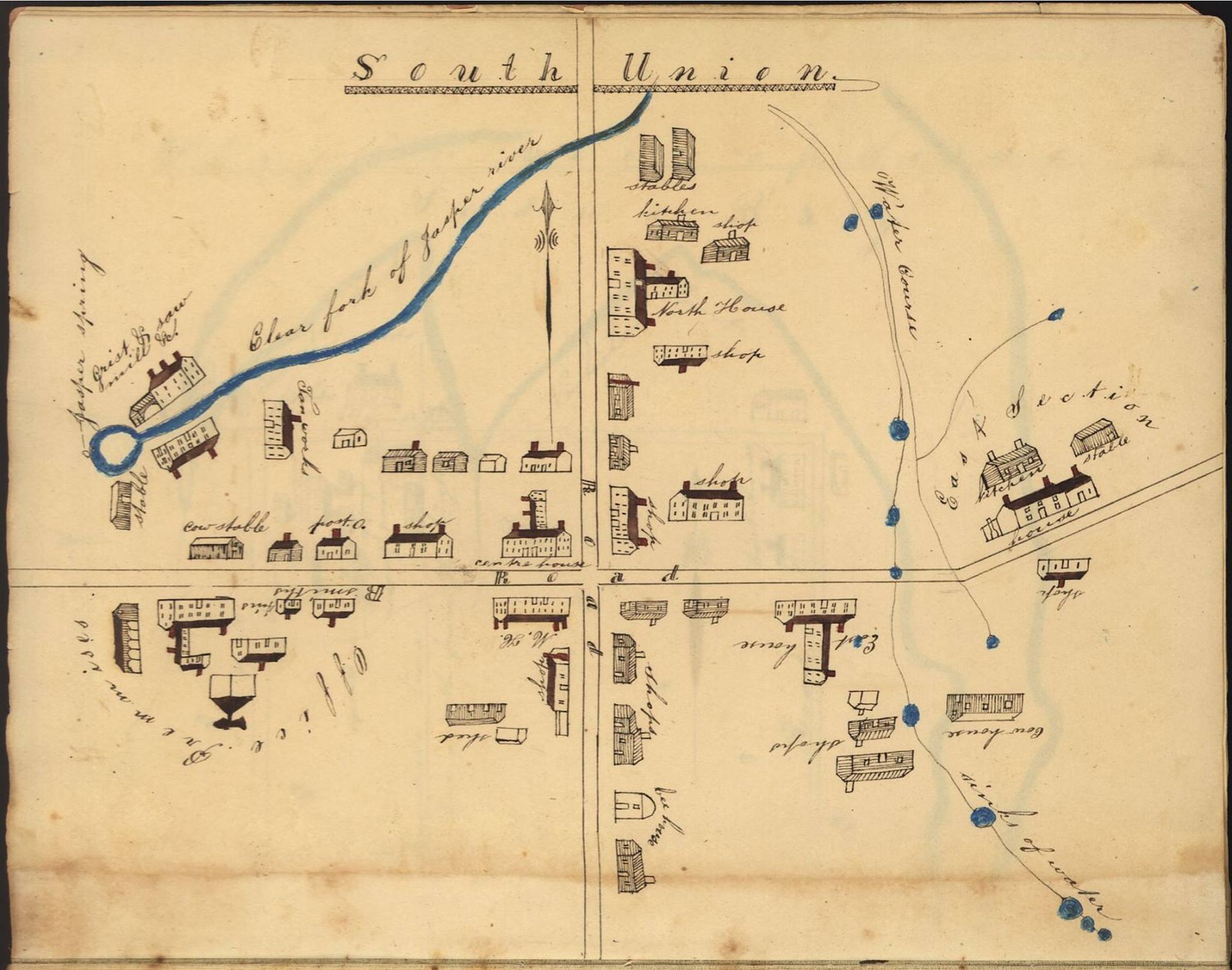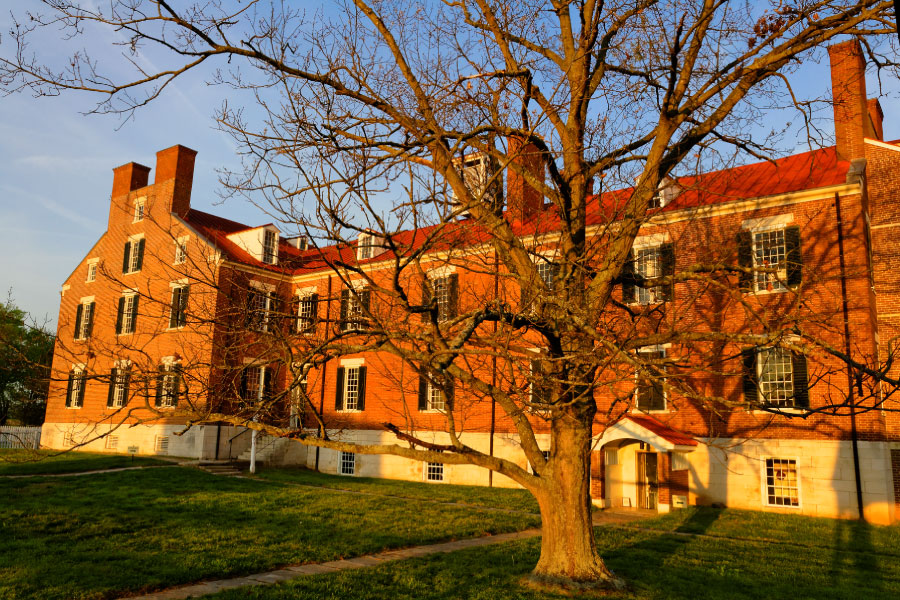Architecture
at South Union
South Union was founded in 1807 as the result of Shaker missionaries’ discovery of willing converts in frontier Kentucky. The communal society first occupied the homes of some of its early members and later built log cabins to accommodate a growing population. By the 1830s, the Shakers had constructed nearly 75 buildings, most of them brick, to house the community and to provide workspace for its industries. The village flourished during the early 19th century but suffered financial setbacks during the Civil War and a declining membership afterward. By the time the village disbanded in 1922 the Shakers had constructed over 225 buildings at South Union. Here is what remains:
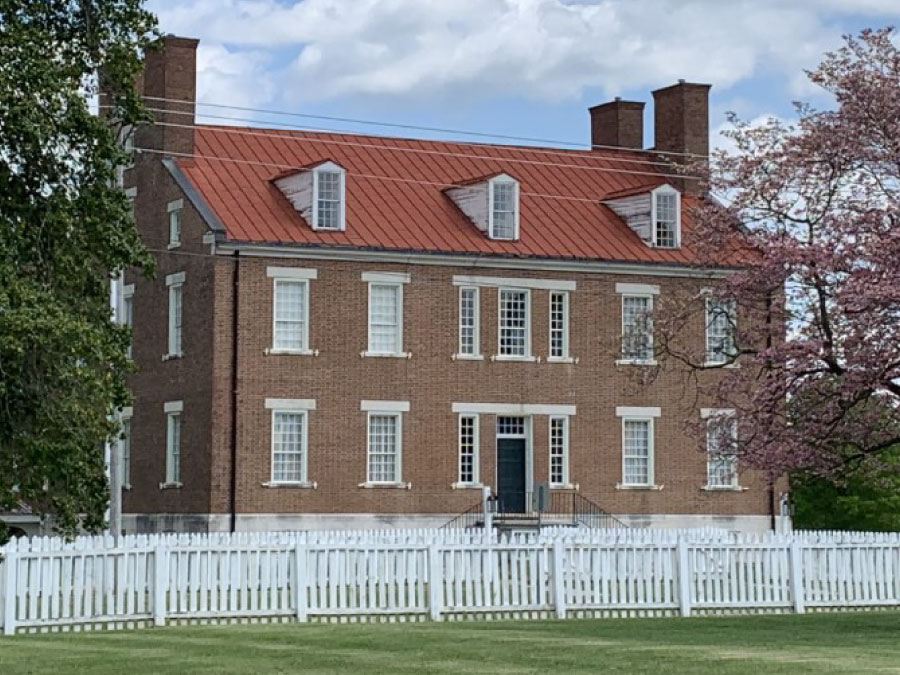
01
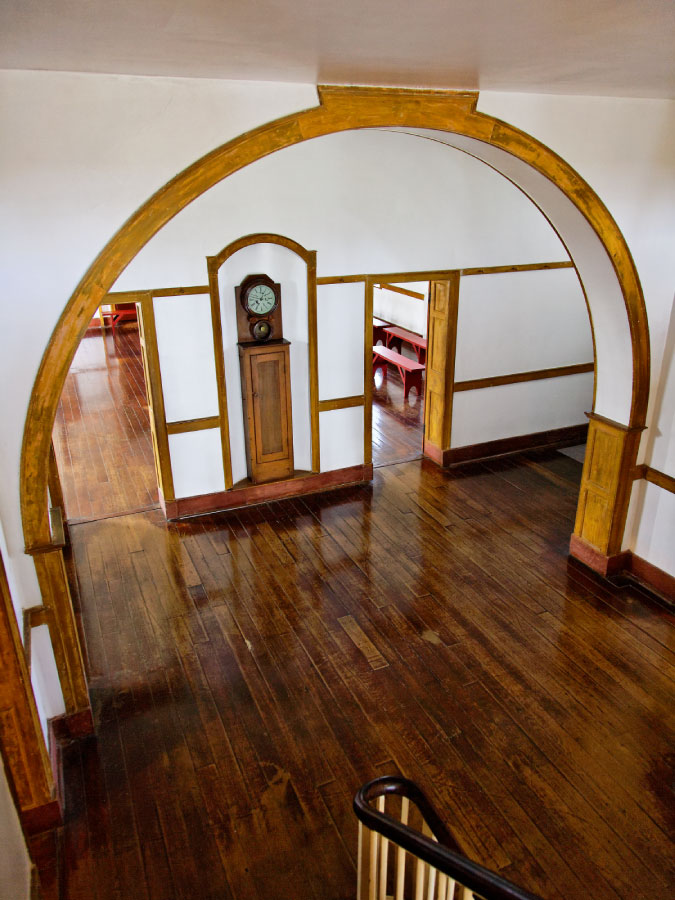
The Centre House
This dwelling house or dormitory, one of four in the village, was once home to nearly one hundred members of the Shaker community. While the upper floors were used for sleeping, the ground floor contained rooms for food storage, a large kitchen, bake room, and dining space. There is also an infirmary and a large meeting room in the house. Men used the east side of the building and women used the west. During the early 20th century, the Shakers installed electric lights, plumbing and radiator heat.
02
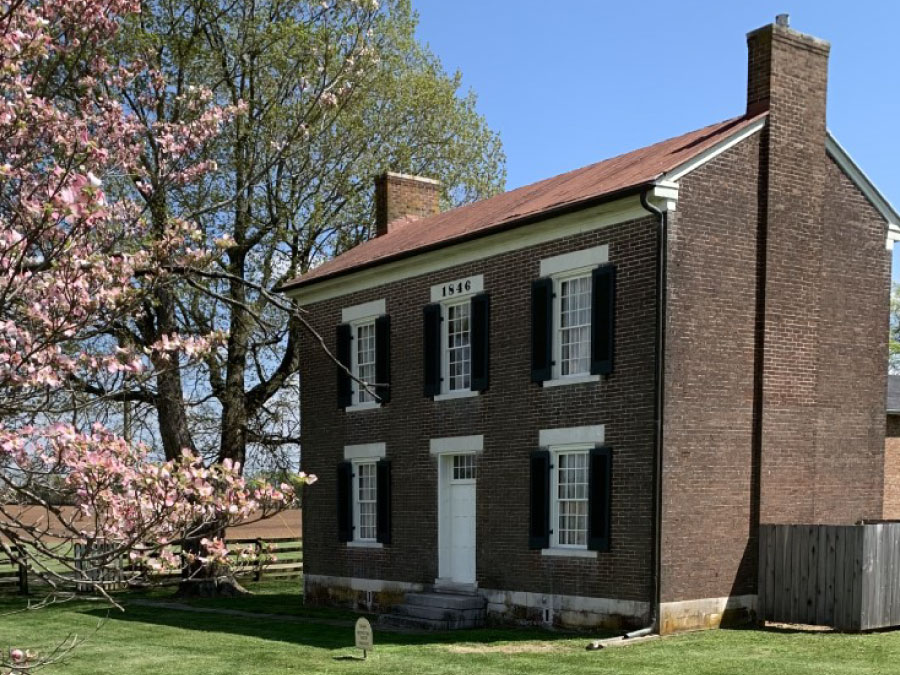
The Ministry Shop
Each Shaker village was governed by an Elder and an Eldress, known as the Ministry. The Ministry Shop is where they, each with an assistant, lived and worked. The women used the front door and occupied the second floor and the men lived and worked downstairs, passing through the south entrance. The vivid paint colors of red, ochre and chrome yellow visible in the building are reproductions of the original surfaces.
03
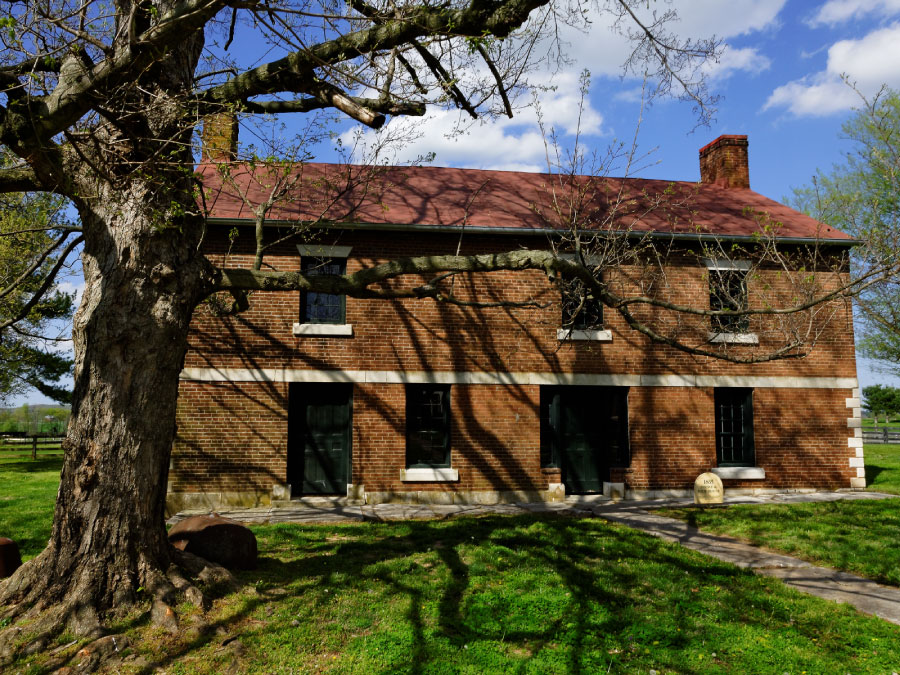
Smoke House + Milk House
Subsidiary to the Centre House kitchen, the Smoke House and Milk House were where butter and cheese were made and where meat was preserved and stored. Shaker women worked on the dairy side while Shaker men tended the smoke house. Innovative for its time, the building’s architectural plan allowed for efficient use of space and an environment much cleaner than such buildings on regional farms. The interior and exterior paint surfaces have been restored to their original colors.
04
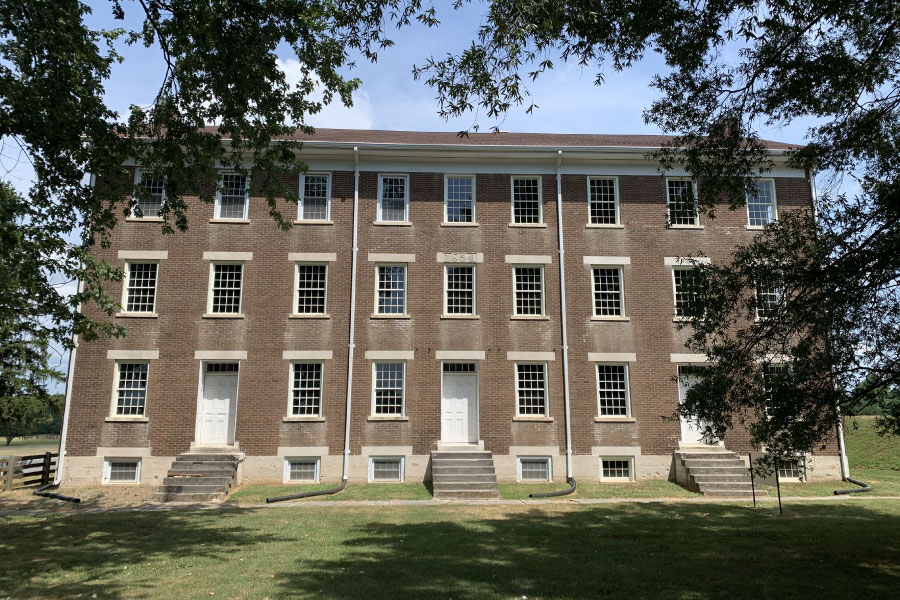
1854 Wash House
One of the largest workshop buildings ever constructed in the Shaker west, the Wash House provided laundry care for those who lived in the Centre House. Starching, ironing, and mending also took place in this building. The structure also housed the Shaker sisters’ preserve-making and textile industries and a music room. Sleeping space was provided for the sisters who worked in the laundry. Research and restoration are on-going.
05
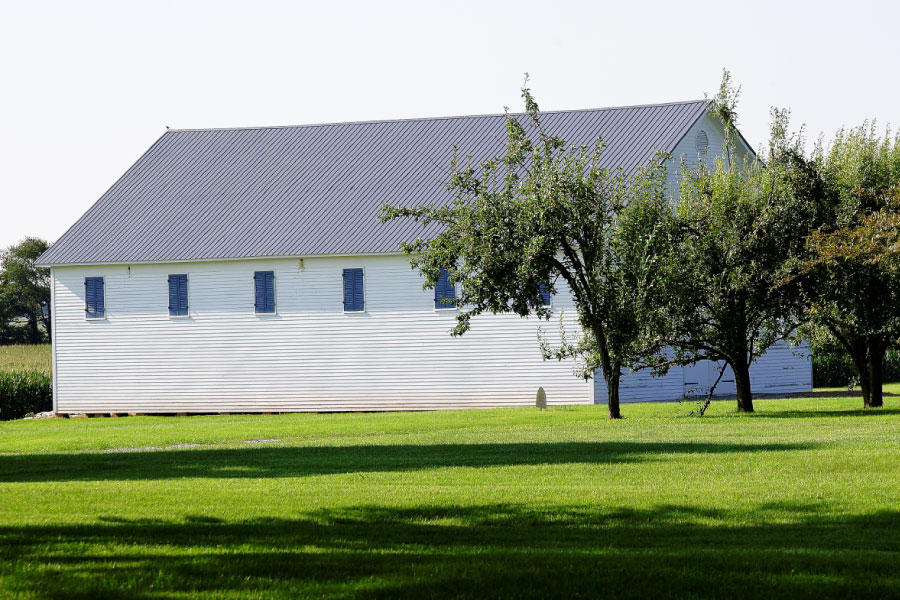
1875 Grain Barn
Used for threshing and grain storage, the Grain Barn was one of a dozen or more barns built at South Union. Complete with a built-in scale in the floor and a pulley system to hoist grain to the upper levels, it is the only surviving barn at South Union.
06
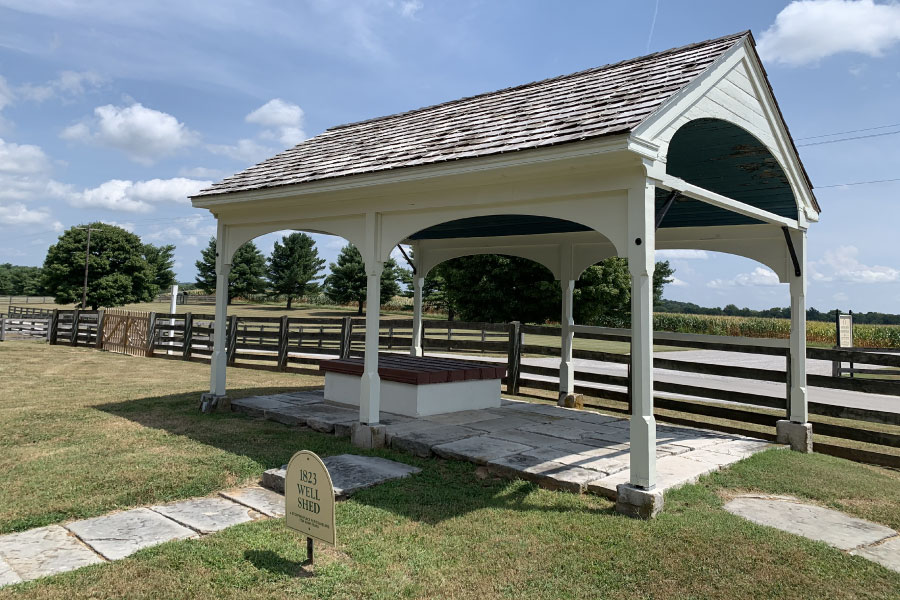
1823 Well Shed
This hand-dug, limestone well’s location was chosen so it could provide water for the inhabitants of the Centre House, but its proximity to the main road made it a popular stopping place for travelers for almost a hundred years. Originally there were wooden steps that scaled the fence so that those on foot could have access to the water.
07
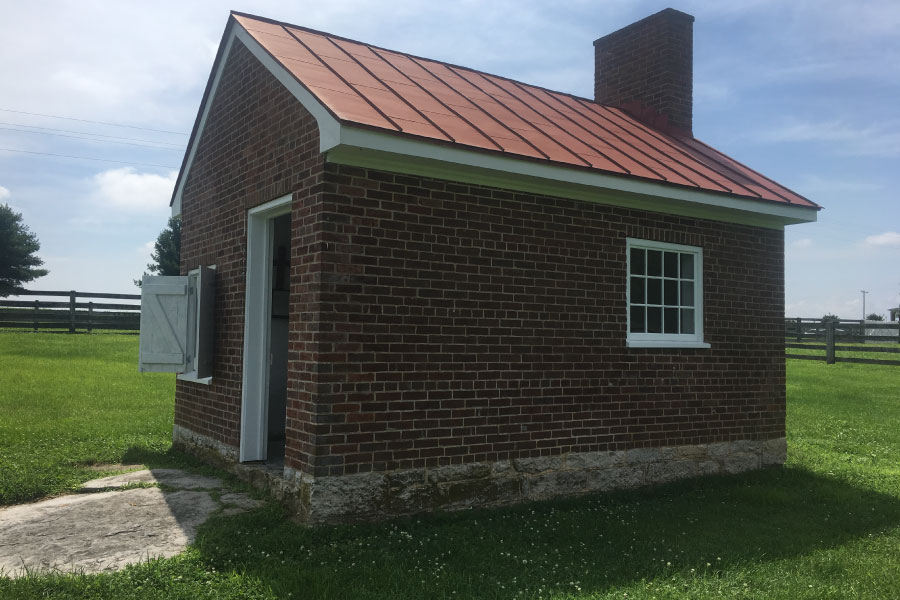
1847 Steam House
Located near the foundation of the 1836 Cow Barn, the Steam House was built at a time when current agricultural practices encouraged cooking feed for livestock during the winter months. According to agriculture scholars in the 1840s, cooked feed fattened livestock more quickly and produced a shinier coat. This rare building is all that remains of the South Union’s Shakers long-lived and successful purebred cattle industry.
08
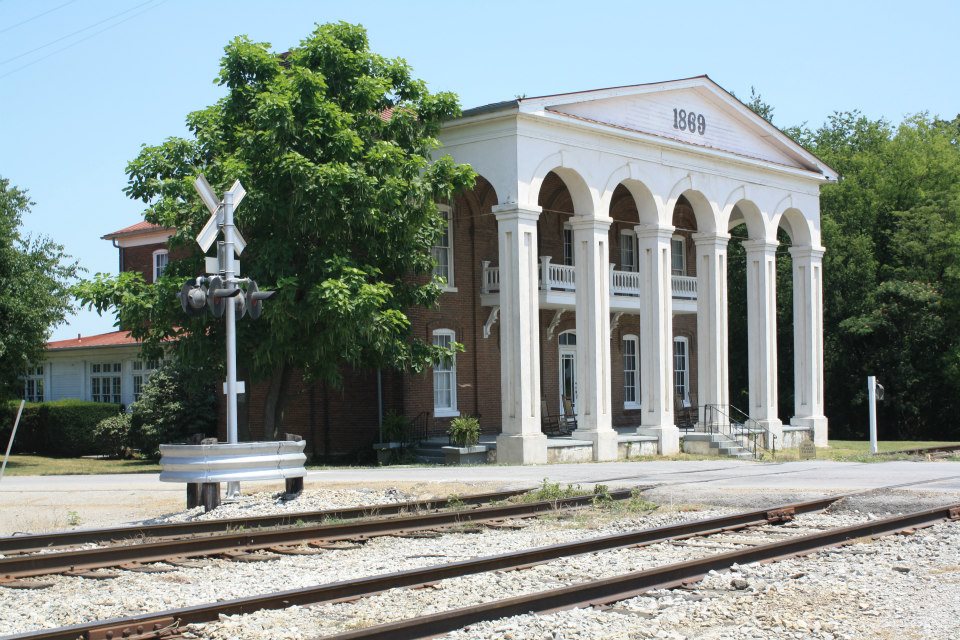
1869 South Union Hotel
Constructed at South Union Station, the Shakers’ commercial district, the South Union Hotel provided a full-service restaurant and overnight accommodations to travelers for over fifty years. Located at the intersection of Morgantown Road and the L & N Railroad, South Union Station also included blacksmith and livery, a general store and post office, and small dwellings for the families that operated the individual businesses. The South Union Hotel was designed to appeal to customers of the day and its architecture and interior did not subscribe to Shaker simplicity. Today it is operated by SUSV as an event venue.
09
1917 Shaker Store and Post Office
The last major building to be constructed by the South Union Shakers, this building was the commercial hub of South Union Station. It replaced an earlier storehouse that had burned in 1916. After the Shakers sold the village in 1922, a grocery business continued to operate in the structure more than fifty years and the South Union post office remained open until the 1990s.
